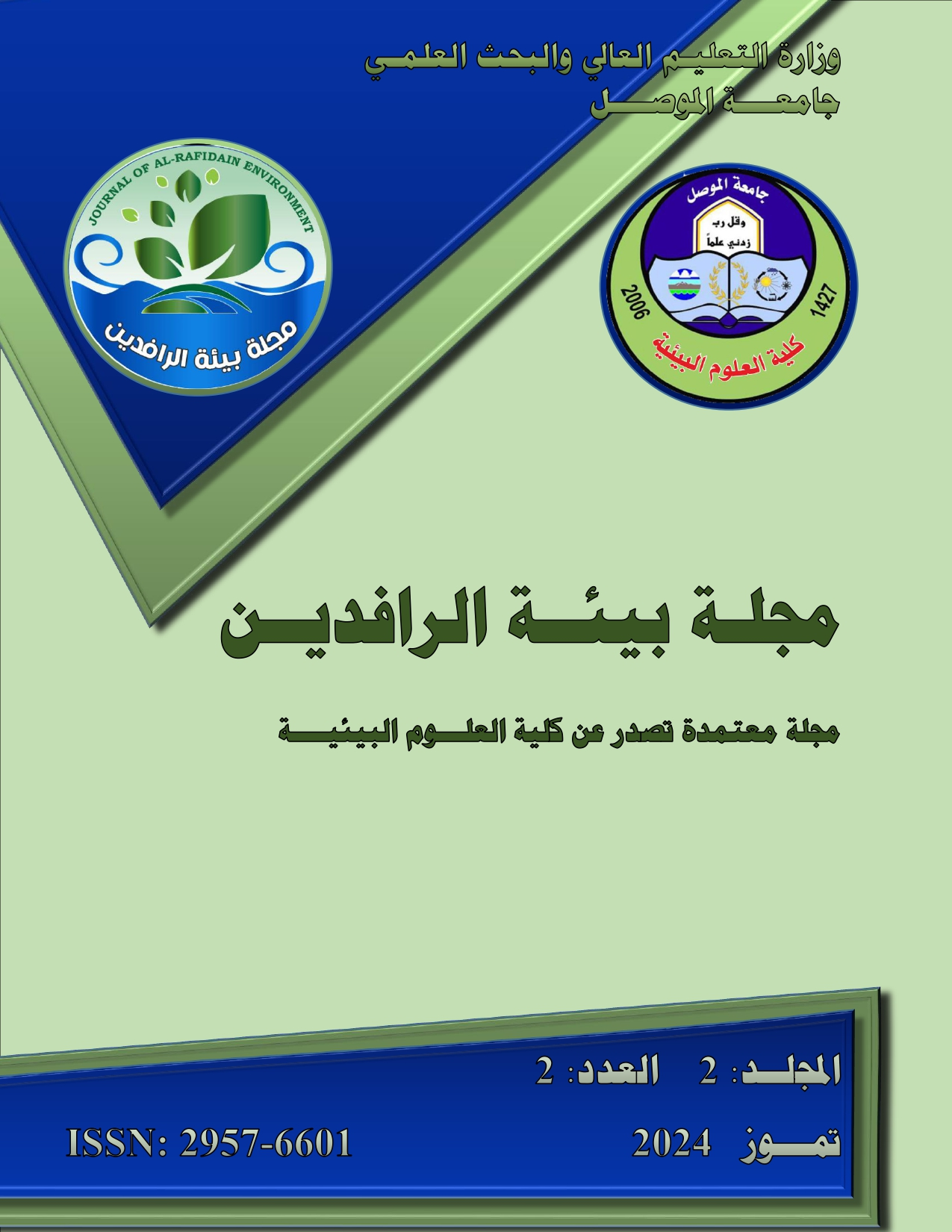Evaluation of water quality in some swimming pools in Mosul city / Iraq

Published
Oct 6, 2025Pages
68-75Abstract
Concerns have been raised about potential negative effects on human health when exposed to water disinfectants used in swimming pools. Among the disinfection options, chlorine has been preferred as the primary disinfectant in Mosul city swimming pools because of its cheap price and the ability of chlorine to easily react with organic matter left behind by pool patrons, leading to the formation of potentially harmful chlorine by-products (CBPs) and a source of concern for Swimmers' health. The higher the concentration of chlorine byproducts (CBPs) in the water, the greater their concentration in the pool, and exposure to them in swimming pools (water ingestion, skin absorption, inhalation) affects the health of swimmers who remain indoors for long periods, such as coaches, pool staff, Swimming pools. The aim is to detect the quality of water in swimming pools and the efficiency of the chlorine as a disinfectant. The pH, free chlorine, total chlorine, and combined chlorine were measured using a German-made Pool Lab 1.0 device during the morning, noon, and evening in 6 swimming pools in Mosul city, the average pH was 6.98, 0.169ppm, 0.327ppm, and 0.158 ppm, respectively. The highest results were in the evening period, where the pH value, free chlorine, total chlorine, and combined chlorine reached pH 6.35, 0.22 ppm, 0.43ppm, and 0.21 ppm respectively, and the lowest in the morning period. We conclude from the above that pH direct and important effect on the effectiveness of chlorine and its work as a disinfectant in swimming pools.
References
- Geiger, K.R. and Henschke, N., 2015. Swimming for children and adolescents with asthma. British Journal of Sports Medicine, 49(12), pp.835-836.
- Xiao, R., Ou, T., Ding, S., Fang, C., Xu, Z. and Chu, W., 2023. Disinfection by-products as environmental contaminants of emerging concern: a review on their occurrence, fate and removal in the urban water cycle. Critical Reviews in Environmental Science and Technology, 53(1), pp.19-46.
- Agache, I., Miller, R., Gern, J.E., Hellings, P.W., Jutel, M., Muraro, A., Phipatanakul, W., Quirce, S. and Peden, D., 2019. Emerging concepts and challenges in implementing the exposome paradigm in allergic diseases and asthma: a Practall document. Allergy, 74(3), pp.449-463.
- Elmas, S., Pospisilova, A., Sekulska, A.A., Vasilev, V., Nann, T., Thornton, S. and Priest, C., 2020. Photometric sensing of active chlorine, total chlorine, and pH on a microfluidic chip for online swimming pool monitoring. Sensors, 20(11), p.3099.
- Bhattacharyya, N., Tang, M., Blomdahl, D.C., Jahn, L.G., Abue, P., Allen, D.T., Corsi, R.L., Novoselac, A., Misztal, P.K. and Hildebrandt Ruiz, L., 2023. Bleach emissions interact substantially with surgical and KN95 mask Surfaces. Environmental Science & Technology, 57(16), pp.6589-6598.
- Gérardin, F., Cloteaux, A. and Midoux, N., 2015. Modeling of variations in nitrogen trichloride concentration over time in swimming pool water. Process Safety and Environmental Protection, 94, pp.452-462.
- Bernard, A., Carbonnelle, S., Dumont, X. and Nickmilder, M., 2007. Infant swimming practice, pulmonary epithelium integrity, and the risk of allergic and respiratory diseases later in childhood. Pediatrics, 119(6), pp.1095-1103.
- Florentin, A., Hautemanière, A. and Hartemann, P., 2011. Health effects of disinfection by-products in chlorinated swimming pools. International journal of hygiene and environmental health, 214(6), pp.461-469.
- Afifi, M.Z. and Blatchley III, E.R., 2015. Seasonal dynamics of water and air chemistry in an indoor chlorinated swimming pool. Water Research, 68, pp.771-783.
- Dyck R, Sadiq R, Rodriguez MJ, Simard S, Tardif R. Trihalomethane exposures in indoor swimming pools: a level III fugacity model. Water Res 2011;45:5084-98.
- Zwiener, C., Richardson, S.D., DeMarini, D.M., Grummt, T., Glauner, T. and Frimmel, F.H., 2008. Drowning in disinfection byproducts? Assessing swimming pool water. Environmental Science & Technology, 42(5), pp.1812-1812.
- Bhattacharyya, N., Tang, M., Blomdahl, D.C., Jahn, L.G., Abue, P., Allen, D.T., Corsi, R.L., Novoselac, A., Misztal, P.K. and Hildebrandt Ruiz, L., 2023. Bleach emissions interact substantially with surgical and KN95 mask Surfaces. Environmental Science & Technology, 57(16), pp.6589-6598.
- Shim, J.S., Lee, H.S., Park, D.E., Won Lee, J., Bae, B., Chang, Y., Kim, J., Kim, H.Y. and Kang, H.R., 2020. Aggravation of asthmatic inflammation by chlorine exposure via innate lymphoid cells and CD11cintermediate macrophages. Allergy, 75(2), pp.381-391.
- Kurowski, M., Jurczyk, J., Olszewska-Ziąber, A., Jarzębska, M., Krysztofiak, H. and Kowalski, M.L., 2018. A similar pro/anti-inflammatory cytokine balance is present in the airways of competitive athletes and non-exercising asthmatics. Advances in medical sciences, 63(1), pp.79-86.
Identifiers
Download this PDF file
Statistics
Copyright and Licensing

This work is licensed under a Creative Commons Attribution-NonCommercial 4.0 International License.